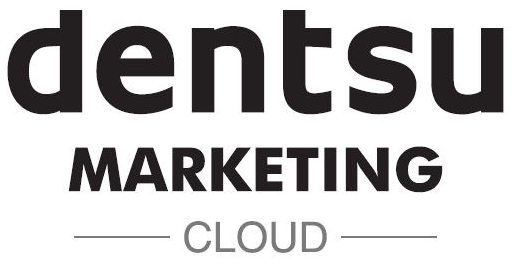As we step into 2024, the advertising landscape is already marked by new trends and innovative strategies. With technological advancements and evolving consumer behaviors at the forefront, advertisers are gearing up to navigate an ever-changing terrain. From quick optimisations fueled by AI to the continued rise of influencer marketing, the year ahead promises to be a year of creativity and data-driven precision. As we dive into the top advertising trends for 2024, it becomes evident that staying ahead of the curve will require a blend of adaptability, strategic insight, and a good understanding of the intersection between technology and human connection.
In this fast-paced digital era, where time is a precious commodity, the demand for quicker content consumption has become bigger than ever. Capturing audience attention is more apparent than ever. Consumers, driven by the hustle and bustle of modern life, seek content that delivers its message swiftly and engages them within seconds.
Video Ads loses sound and gets shorter
As mobile video ad spending in the APAC is projected to reach US$175.5 billion, accounting for over 40% of global online ad spending, marketers are adapting to changing consumer preferences by embracing shorter and more engaging video formats. Innervate studies revealed that over 25% of adults admit to closing a video after just 10 seconds, and more than half opt out after 20 seconds. Brands are increasingly favoring ultra-short ads, such as Hefty’s six-second “Party Hefty” series, designed to capture attention and overcome the “skip” button on platforms like YouTube.
Additionally, to address the widespread aversion to autoplay ads with sound, marketers are turning to outstream video ads. Another study by Teads talks about how 66% of consumers say they hate it when video ads automatically play with sound. Whereas outstream ads seamlessly integrate into content, autoplaying silently when scrolled over and pausing when out of view. The shift to shorter and sound-off video formats aligns with consumer preferences, which promises higher engagement rates and click-through rates compared to traditional in-stream video advertising.
Embracing authenticity and micro influencers
As consumers started increasingly prioritizing authenticity in brand messaging, social media advertising is undergoing a transformation. A notable shift is evident in the preference for more genuine video content. With 88% of consumers prioritizing authenticity (Source: Stackla), brands like Rare Beauty are achieving success by collaborating with relatable creators on platforms like TikTok, resulting in a significant percentage of campaign conversions. Recognizing this demand for authenticity, influencer marketers are favouring micro-influencers over celebrities, as 80% of them collaborate with smaller creators (Source: Hubspot), finding it more cost-effective. As marketers adapt to these changing dynamics, the emphasis on brevity, relatability, and unobtrusiveness in video advertising is likely to shape future strategies, catering to the evolving preferences of today’s consumers.
Gaming is a melting pot for marketers
Major companies like Unilever, Coca-Cola and Ford are already heavily investing in in-game ads. Red Bull and Intel are among the companies that have long embraced gaming advertising, frequently sponsoring eSports gaming events. In-Game ad formats such as opt-in reward ads, playable ads, and personalized video ads have successfully made gaming ads a feature that gamers enjoy. Over 50% of the top 50 iOS games have monetized through in-game ads, compared to just 12% of non-gaming apps.Verticals such as healthcare, consumer packaged goods, and automotive, have also run campaigns via gaming ad formats and have seen engagement increase. These ads are shown as a way to earn “reward” ads on mobile gaming apps. These Interstitial ads are put at stopping points in the game, so they don’t feel unnatural to the user. Reward ads offer users game points, currency, or another gaming-related benefit for watching the entire video ad. More than 70% of gamers said watching video ads is their preferred way to “pay” for in-game content. (Source: In-game Advertising)
Diversity, Equity, and Inclusion takes the centerstage for marketers
Diversity, Equity, and Inclusion (DEI) is also emerging as one of the focal points. A shift is evident as companies actively engage in inclusive practices to cater to diverse markets, spanning cultures, ethnicities, races, genders, sexual orientations, ages, and individuals with special needs. A Meta Study underscores that 71% of consumers anticipate brands to champion diversity and inclusion in their online advertising, with 54% expressing the need for greater cultural representation.
In response to a growing market of socially conscious consumers, businesses are adopting DEI marketing techniques. This necessitates a departure from silence on social issues, with brands such as ThirdLove, Nike, and Bumble leading the charge in the “inclusive revolution.” These companies showcase diverse individuals across races, body types, ages, and sexualities in their innovative campaigns. Anticipating a surge in consumer demand for diversity and inclusivity, it is foreseeable that more brands will actively embrace DEI, making it a central theme in their marketing strategies.
Optimize your Ads faster with AI marketing tools
SEMrush recently reported that AI technology is most widely prioritized in marketing and sales departments compared to other company departments. Advertisers are using AI tools to improve the way they test and optimize impressions, click-through rates, bid levels, and targeting. Rather than humans spending days or weeks doing this work, AI tools can see patterns in the data and predict what will perform best, all in seconds. Advertisers who have used AI to optimize their campaigns have achieved an average 46% increase in click-through rates and a 34% increase in conversions (Source: Linkedin)
Similarly Dentsu Marketing Cloud also recently introduced AI-opt feature. It was integrated into DMC with a singular purpose – to simplify the users life by making them aware about their optimisation opportunities and optimising their campaigns for them, thus saving their time. You can now optimise your campaigns 40% faster. It also focuses on always improving the campaign performance by optimising (Budget, Bids and interest targeting) at every given opportunity, making sure you never miss an opportunity to maximise performance. To know more about it click here.
As we navigate through the marketing landscape of 2024, the convergence of shorter, soundless video ads, the rise of authenticity through micro-influencers, the gaming revolution for marketers, DEI in advertising and the forefront role of AI illuminates a path of innovation and connection. Success this year demands not only staying ahead of trends but mastering the art of blending technology with human-centric strategies for a compelling and inclusive brand narrative.





